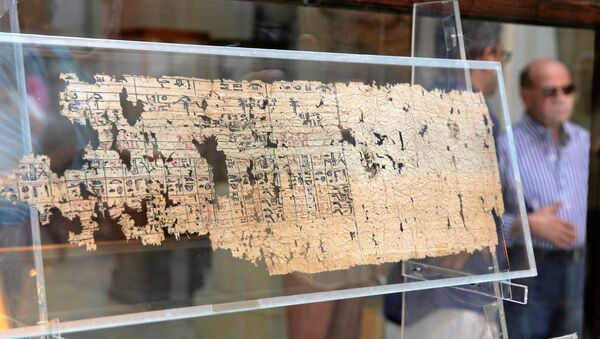The papyri were discovered in 2013 at the Red Sea Wadi El-Jarf port, 120 km south of the town of Suez, by a Franco-Egyptian mission led by French Egyptologist Pierre Tallet and Egyptian Egyptologist Sayed Mahfouz.
#New_Exhibition_at_EMC pic.twitter.com/2iSDgyqIxc
— Egyptian Museum (@MuseumEgyptianC) 14 июля 2016 г.
"The papyri talk about the daily life of the workers who used to work in the Wadi El-Jarf port," Egyptian Antiquities Minister Khaled El-Enany told reporters during a ceremony at the Museum, adding "they are almost the same workers who constructed the Great Giza Pyramid of King Khufu."
H.E. Minister of Antiquities, Dr. Khaled el-Enany, today inaugurated the exhibition of the papyri of khufu pic.twitter.com/h2II6cF11d
— Egyptian Museum (@MuseumEgyptianC) 14 июля 2016 г.
"These discoveries should not be hidden in boxes. We need to attract the attention of the whole world to Egypt; that is why I decided to showcase the papyri because such relics will revive tourism in Egypt," Museum curator Sabah Abdel-Razek added.




